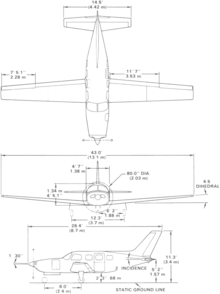
The Piper PA-28 Cherokee is a family of two-seat or four-seat light aircraft built by Piper Aircraft and designed for flight training, air taxi and personal use. The PA-28 family of aircraft comprises all-metal, unpressurized, single piston-engined airplanes with low-mounted wings and tricycle landing gear. They have a single door on the right side, which is entered by stepping on the wing.

The Cessna 208 Caravan is a utility aircraft produced by Cessna. The project was commenced on November 20, 1981, and the prototype first flew on December 9, 1982. The production model was certified by the FAA in October 1984 and its Cargomaster freighter variant was developed for FedEx. The 4 ft (1.2 m) longer 208B Super Cargomaster first flew in 1986 and was developed into the passenger 208B Grand Caravan.

The Pratt & Whitney Canada PT6 is a turboprop aircraft engine produced by Pratt & Whitney Canada. Its design was started in 1958, it first ran in February 1960, first flew on 30 May 1961, entered service in 1964, and has been continuously updated since. The PT6 consists of two basic sections: a gas generator with accessory gearbox, and a free-power turbine with reduction gearbox. In aircraft, the engine is often mounted "backwards," with the intake at the rear and the exhaust at the front, so that the turbine is directly connected to the propeller. Many variants of the PT6 have been produced, not only as turboprops but also as turboshaft engines for helicopters, land vehicles, hovercraft, and boats; as auxiliary power units; and for industrial uses. By November 2015, 51,000 had been produced, which had logged 400 million flight hours from 1963 to 2016. It is known for its reliability, with an in-flight shutdown rate of 1 per 651,126 hours in 2016. The PT6A turboprop engine covers the power range between 580 and 1,940 shp, while the PT6B/C are turboshaft variants for helicopters.

The Beechcraft King Air is a line of American utility aircraft produced by Beechcraft. The King Air line comprises a number of twin-turboprop models that have been divided into two families. The Model 90 and 100 series developed in the 1960s are known as King Airs, while the later T-tail Model 200 and 300 series were originally marketed as Super King Airs, with the name "Super" being dropped by Beechcraft in 1996.
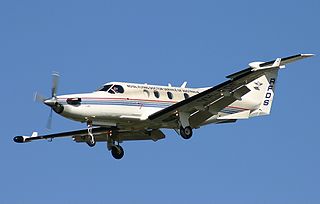
The Pilatus PC-12 is a pressurized, single-engined, turboprop aircraft manufactured by Pilatus Aircraft of Stans, Switzerland since 1991. It was designed as a high-performance utility aircraft that incorporates a large aft cargo door in addition to the main passenger door. Due to its efficient, high-utility design, the PC-12 is used by a large variety of operators. The main use for the aircraft is corporate transportation, but it is also used by fractional and small regional airlines, air-ambulance operators, and many government agencies, such as police departments and armed forces. The PC-12 is successful with 2,000 deliveries made as of May 2023.

The Cessna 441 Conquest II is the first turboprop powered aircraft designed by Cessna and was meant to fill the gap between their jets and piston-engined aircraft. It was developed in November 1974, with the first aircraft delivered in September 1977. It is a pressurized, 8–9 passenger turbine development of the Cessna 404 Titan.

The Piper PA-32R is a six-seat, high-performance, single engine, all-metal, fixed-wing aircraft produced by Piper Aircraft of Vero Beach, Florida. The design began life as the Piper Lance, a retractable-gear version of the Piper Cherokee Six. Later models became known by the designation Piper Saratoga. The primary difference between the Lance and early Saratoga is the development of a tapered wing on the Saratoga, replacing the "Hershey bar" wing on the Lance that was a carryover from the Cherokee Six. Later Saratoga models provided updated/improved avionics, engine and interior touches but retained the same airframe design.

The PZL 130 Orlik is a Polish turboprop, single engine, two seat trainer aircraft.
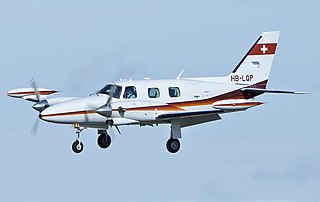
The Piper PA-31T Cheyenne is a turboprop development of the earlier PA-31P Pressurized Navajo.

The Piper PA-42 Cheyenne is a turboprop aircraft built by Piper Aircraft. The PA-42 Cheyenne is a larger development of the earlier PA-31T Cheyennes I and II.

Pula Airport is the international airport serving the city of Pula, in northwestern Croatia, and is located 6 km from the city centre. It served 777,568 passengers in 2019. The airport is designated as the alternative airport for parts of Slovenia and a multitude of cities in eastern Italy. It serves as a major access point to the city of Pula, as well as most of Istria, most notably Brijuni national park.

The SOCATA TBM is a family of high-performance single-engine turboprop business and utility light aircraft manufactured by Daher. It was originally collaboratively developed between the American Mooney Airplane Company and French light aircraft manufacturer SOCATA.

The Cirrus Vision SF50, also known as the Vision Jet, is a single-engine very light jet designed and produced by Cirrus Aircraft of Duluth, Minnesota, United States.

The Beechcraft Model 38P Lightning was an experimental turboprop aircraft built and tested by Beechcraft in the 1980s.

The Garmin G3000 is an avionics interface system designed by Garmin Aviation for light turbine aircraft. The integrated touchscreen system contains multiple glass cockpit displays for operating a synthetic vision system and a three-dimensional displayed rendering of terrain.

The Daher Kodiak is an American utility aircraft designed by and originally manufactured by Quest Aircraft in Sandpoint, Idaho. Manufacturing was taken over by Daher in 2019 after its purchase of Quest Aircraft. The high-wing, unpressurized, single-engined turboprop has a fixed tricycle landing gear and is suitable for STOL operations from unimproved airfields.

The Epic E1000 is an American single-engine, six-seat, turboprop light aircraft developed by Epic Aircraft of Bend, Oregon.
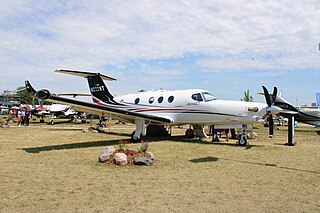
The Beechcraft Denali, also known as the Model 220 and previously the Cessna Denali and Textron "Single Engine Turboprop" (SETP), is an American single engine turboprop aircraft under development by Textron Aviation. Announced at EAA AirVenture Oshkosh 2015, the aircraft is a completely new design, not derived from any existing aircraft. It should compete with the Pilatus PC-12 and Daher-Socata TBM, as well as other new projects such as the One Aviation Kestrel K-350 and the CAIGA Primus 150.
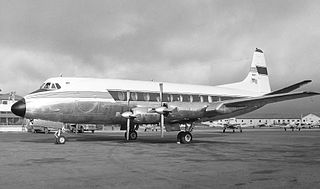
Business aircraft are aircraft typically used by companies and corporations to transport people or goods related to the needs of said businesses. Most business aircraft are general aviation aircraft variants of piston or turboprop or business jets.
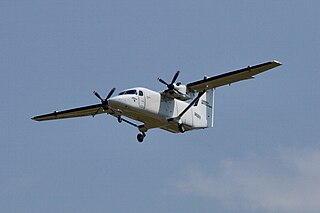
The Cessna 408 SkyCourier is an American utility aircraft designed and built by the Cessna division of Textron Aviation. It was launched on November 28, 2017, with an order for 50 from FedEx Express, with the aircraft designed for the needs of its FedEx Feeder service. It made its first flight on May 17, 2020, and was type certified on March 11, 2022. FedEx took delivery of the first production model on May 9, 2022.








